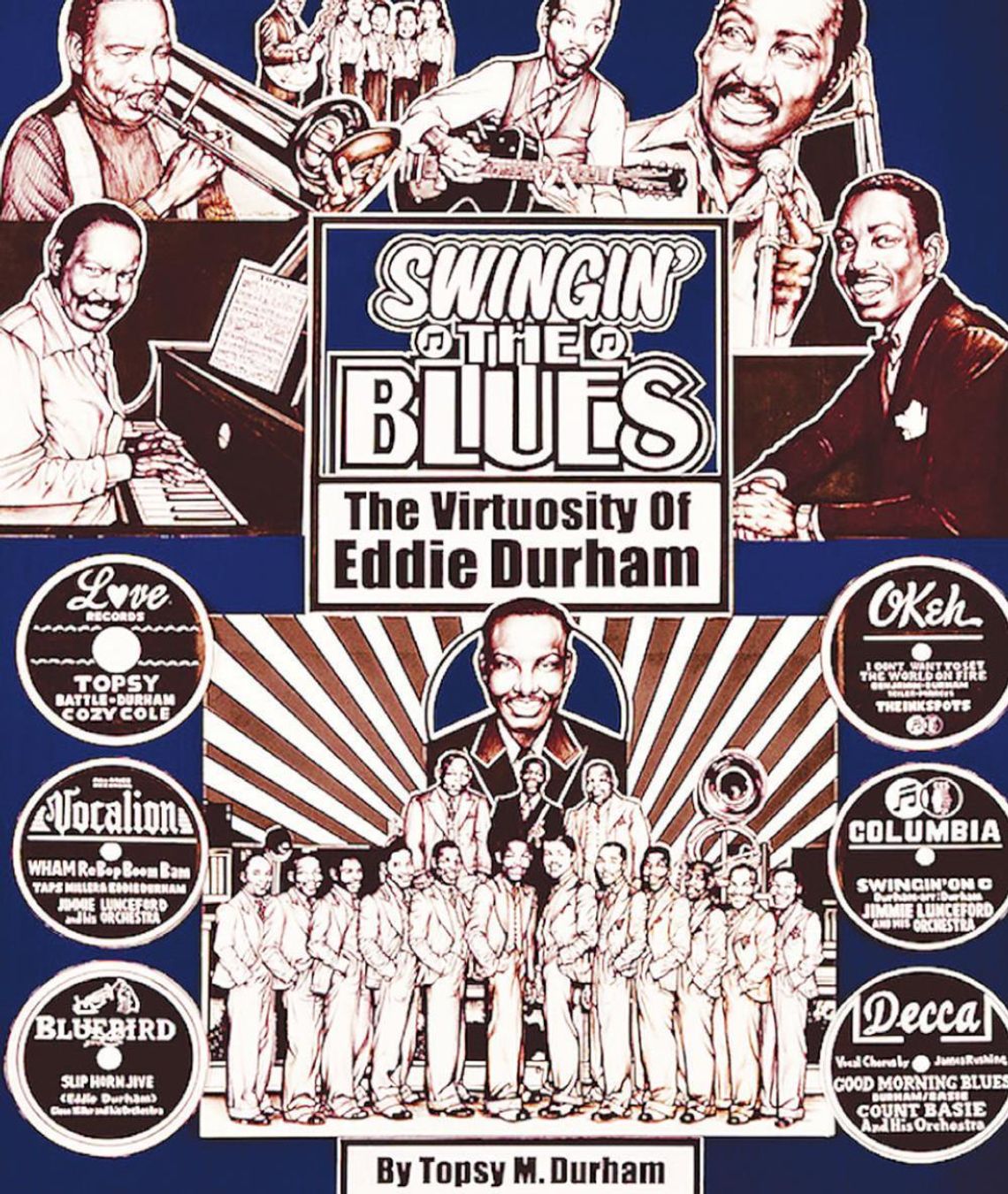There are no comprehensive writings on Texan trombonist/guitarist, composer/arranger, pianist, choreographer and San Marcos native, Eddie Durham (1906-1987), or his unique musical family. A book — Swingin' the Blues: The Virtuosity of Eddie Durham — chronologically compiles news articles and flyers, transcribed radio interviews, quotes, personal interviews with family, peers, colleagues and scholars, of and about the travels of the Durham family. Collectively, Eddie Durham’s brothers and cousins worked in the Teddy Roosevelt Roughriders Homecoming Band, with T-Bone, Les Hite, Lionel Hampton, Nat King Cole, Harry James, Teddy Wilson, Buck Clayton and Lester Young. In his late teens, Durham himself roomed with Art Tatum as well as the Tommy Dorsey family. In the 1930s, at the dawn of American big-band jazz, while he was with The Blue Devils and The Bennie Moten Orchestras, Durham transformed the stomp band sound into the idiom of swing dance music.
While Durham was in The Count Basie Orchestra, it became the big-band model for swing music. This was because of Durham's chart-topping compositions and arrangements, notably "Swinging the Blues,” “Time Out,” “Out The Window,” “Every Tub,” “Magic Carpet,” “John's Idea” and his arrangements of “Moten Swing," "One O’Clock Jump” and "Jumpin At The Woodside.” These hits spawned the emergence of a dance known as jitterbug, also known as lindy-hop and now, almost a century later, Durham’s music still thrives through internationally-competitive swing dancing.
Scouted by bandleaders as a hit-maker, Durham provided big bands and big-band leaders — Jimmie Lunceford, Harry James, Jan Savitt, The Ink Spots, and the Sweethearts of Rhythms, to name a few — with show-stopping smash hits, both sweet as well as bombastic flag-wavers. This included compositions for Wynonie Harris, who was studied by Elvis Presley.








